Many people think Norfolk does not have many hills or high points, but there are plenty that once climbed, offer fabulous views! Here’s our top five walks with views in north Norfolk.
Beacon Hill. Beacon Hill (also known as Roman Camp) is the highest point in East Anglia and forms the pinnacle of the Cromer Ridge offering superb views across the coast. This ridge was formed around 450,000 years ago, when a series of ice sheets up to a mile-thick, covered the whole area, leaving behind piles of sand, gravel and silt as the ice sheets retreated.
At its summit, the hill is 103 metres (338 ft) above sea level and it is here there there is an earthwork enclosure. It was once a coastal signal station, around the time of the Spanish Armada in 1588. This area is known as Roman camp, which is believed to have been coined at the turn of the 19th century by local horse drawn cab drivers, to make the place sound more intriguing to tourists. Despite its name there is no evidence of any Roman occupation on this site.
The summit and surrounding woodlands are now in the care of the National Trust. A track, named Calves Well Lane, running west from Sandy Lane leads to a car park and there are several footpaths to follow. With benches to stop off at, Beacon Hill is an ideal location for picnics and the chance to take in the fabulous Norfolk scenery.
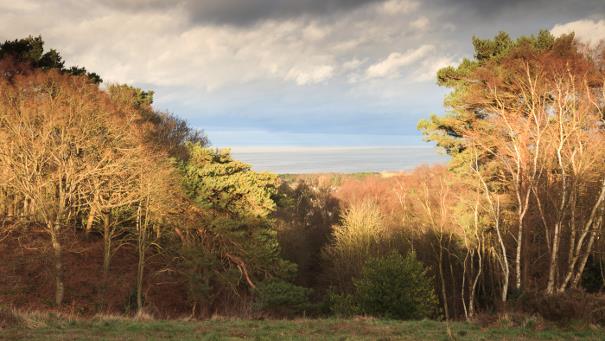
Incleborough Hill. For one of the best views of the coast and the sea, take a trip up Incleborough Hill. The hill was formed when a glacier from Norway met one moving from the west and when they melted, all that was left was a pile of sand and gravel.
On the way to the top, you may see the bagot goats (during the summer) which have been put on the hill to help keep the vegetation in check. Once at the top, you will have stunning panoramic view of the coast, the North Sea with its wind turbines and boats and swathes of north Norfolk. It’s also a great place for nature lovers as grazing has produced many small areas that are suitable for ground nesting and feeding birds. These clearer areas give wildflowers space to grow and flourish.
You may see evidence of earthworks that were constructed during WWII, including practice trenches, weapons pits and gun emplacements. It is rumoured that there were underground tunnels and possibly a command post on the top of the hill as it provided a clear panoramic view of potential enemy activities.
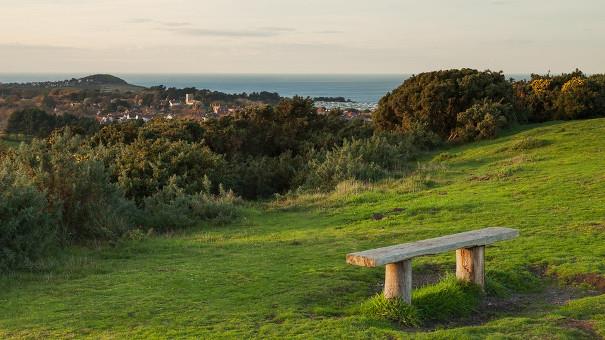
Beeston Bump. Beeston Hill (or Beeston Bump as it is more commonly known) today looks more like a cross-section of a hill as most of its seaward side has eroded away. It was actually one of two hills that sat side by side, however one of these has completely gone, a victim of the incoming tides. Beeston Bump was formed from a kame, which is when sand and gravel are left behind when the Ice Age glaciers retreated.
The steps help your climb up to the top and once there, you are rewarded with great views across the coastline (where you can see how storms and rising seas are affecting the cliffs), the North Sea, the wind turbines and also inland over the town of Sheringham and beyond. To the west you can see as far as the spur of land near Blakeney Point. It was also the location for one of the Signals Intelligence collection sites, called Y-stations during WW2.
On your walk, you may see the Black Shuck! Legend has it, that Beeston Bump is home to a ghostly black hound with red eyes, appearing from the depths of the hill before it roams the coast. The legend was recounted to Sir Arthur Conan Doyle who was on holiday nearby in West Runton and became the inspiration behind his Sherlock Holmes story, The Hound of the Baskervilles.
After walking back down the hill, it is worth paying a visit to the ruin of Beeston Priory, dedicated to St Mary. The priory was founded in 1216 by Margery de Cress, for a small community of four canons who were ordained priests that followed the rule of St Augustine and belonged to the Order of Peterstone. The surviving walls are some of the earliest medieval bricks in Norfolk. The priory and its two neighbouring ponds are popular with walkers, as its quiet surroundings have become a haven for wildlife such as kingfishes, kestrals and jackdaws. The ruins are now owned by English Heritage and are free to explore.
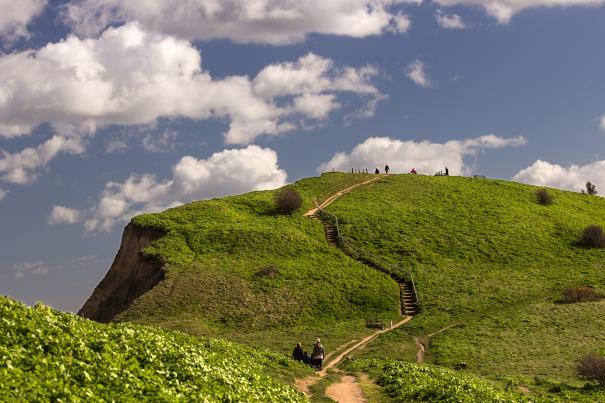
Sheringham Park. The National Trust owned Sheringham Park has four waymarked routes with distances ranging from one to five miles, all with coastal views. The Sheringham Woodland and Coastal Route takes you through parkland, fields, woods, the cliff edge by the sea and also the gazebo at Sheringham Park. The views from the tree-top gazebo are stunning and you may catch a glimpse of the North Norfolk Railway’s engines steaming through the countryside along the walk.
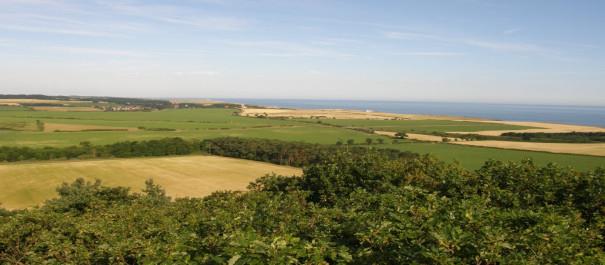
Norfolk Coast Path between Cromer and Sheringham. This stretch of coastline is quite literally a high point of the Coast Path, giving views out to sea and inland including the North Norfolk Railway.
One of the highest points is the the Old Coastguard Lookout (the watch tower) on Skelding Hill near Sheringham Golf Club, where the charity CoastWatch keeps a check for those in trouble at sea. At 170 feet above sea level, and on a clear day, this spot provides a commanding view over 14 miles out to sea and also over the Wash Basin and the Sheringham wind farm. Although you of course can’t see it, if you look north, there is no land all the way between this point and the North Pole!
To the west, you will be able to see as far as Blakeney Point, eight miles away. To the east, you can view the coast off East and West Runton and Cromer. The cliff path sits high above the beach, sometimes being moved further inland as parts of the cliff are eroded. Don’t get too close to the edge is the advice for walkers. The views of the eroded cliffs at Trimingham form the cliff path are also worth a look, with layers of rock and sand mapping out the geological history of the coast.
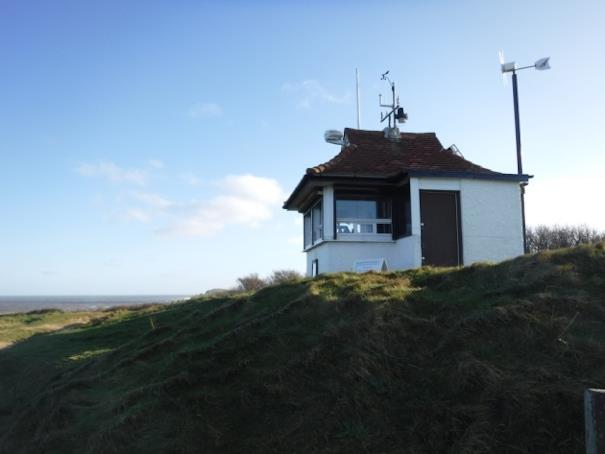
Related
Comments
Comments are disabled for this post.






